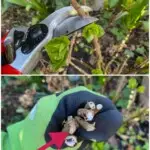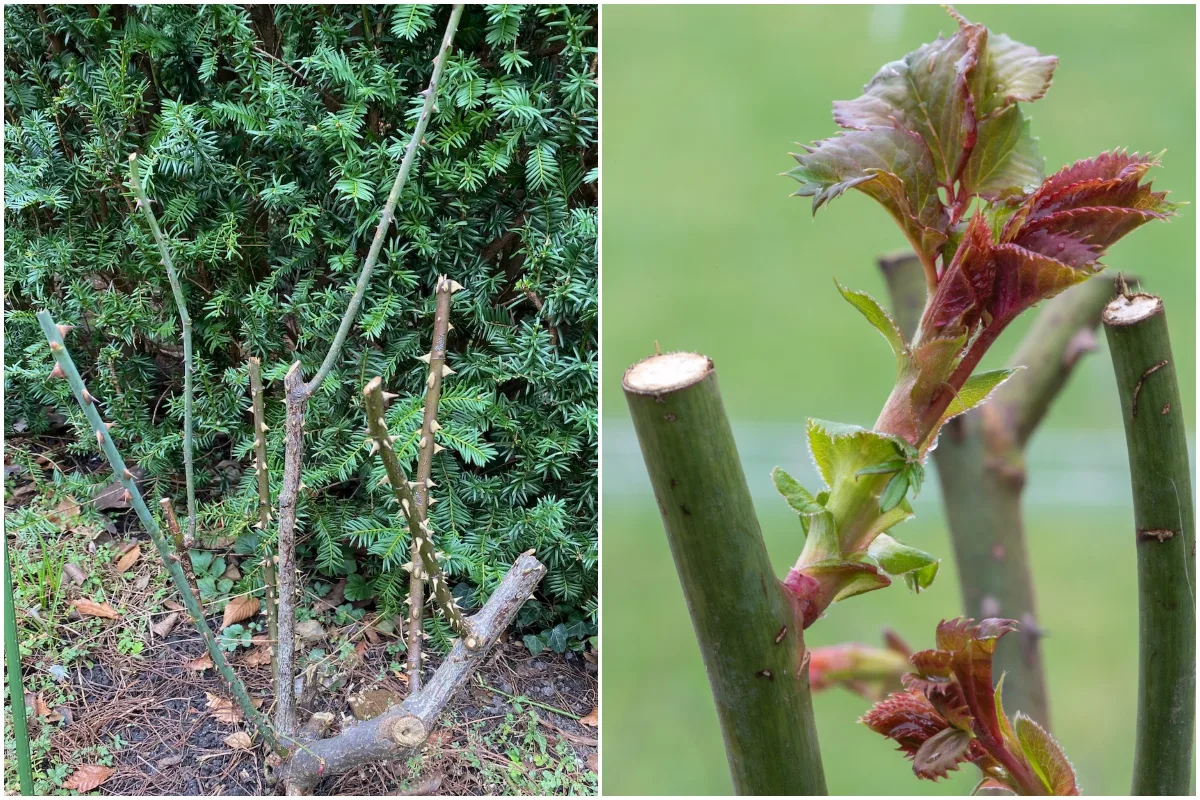
After a thorough inspection of my garden notes and photo albums from previous years, I’ve now calculated that my hydrangeas will start blooming in exactly eighty-seven days and six hours.
As I type this, I’m starting the countdown clock.
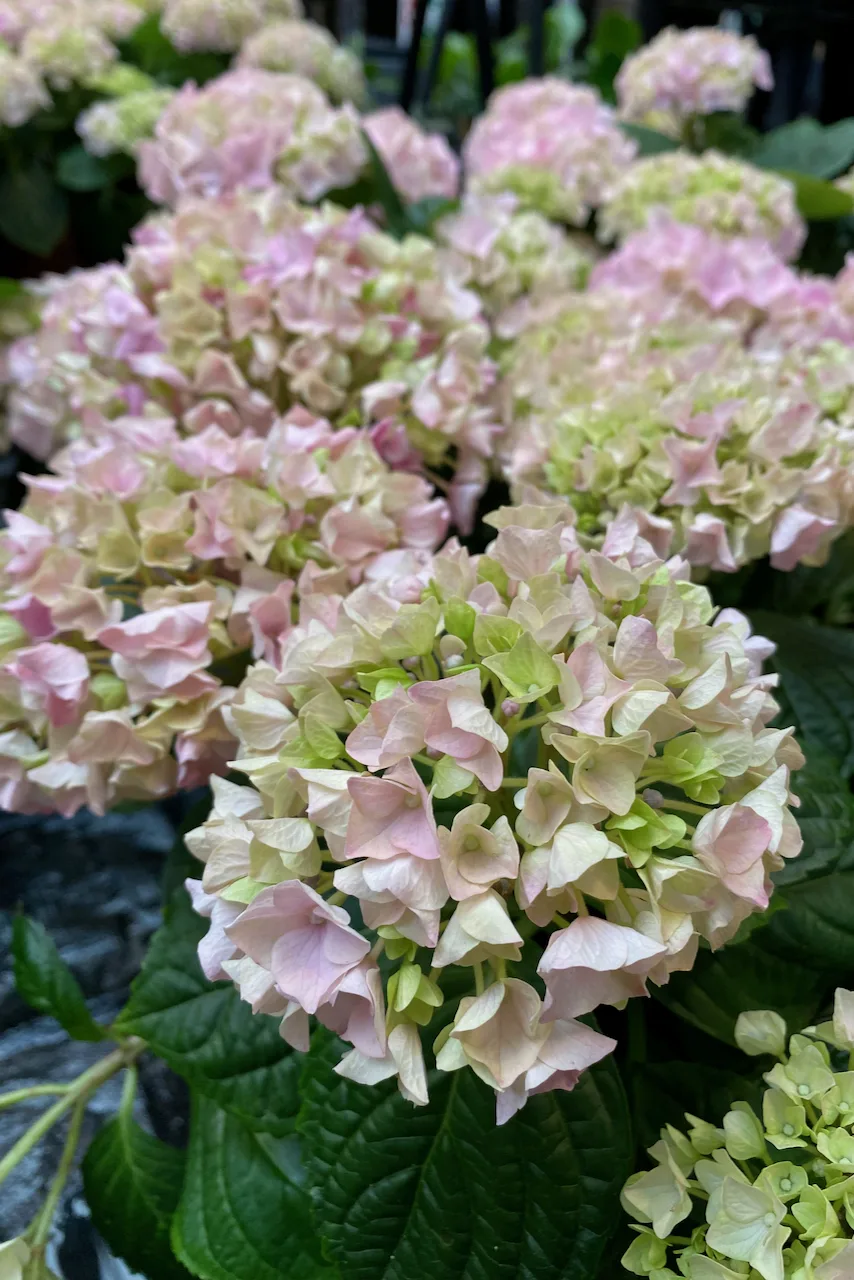
Ok, so maybe I’m not that particular about my hydrangeas. But I know that once spring rolls around, I should get on with hydrangea jobs if I want to have an abundance of rich summer blooms. And boy, do I?
All of my hydrangea shrubs need a bit of TLC to recover from the gray months and jumpstart their growing season. Here’s what I’m doing this spring to ensure there’ll be plenty of hydrangea mopheads this summer.
1. Do some light pruning on old wood hydrangeas.
Based on my observations, the most popular hydrangeas that we grow in the United States and Europe are very likely old wood ones. This means that the plants will flower on the previous year’s growth. This also means that were we to prune them hard this spring, we would risk removing all those future flowers.
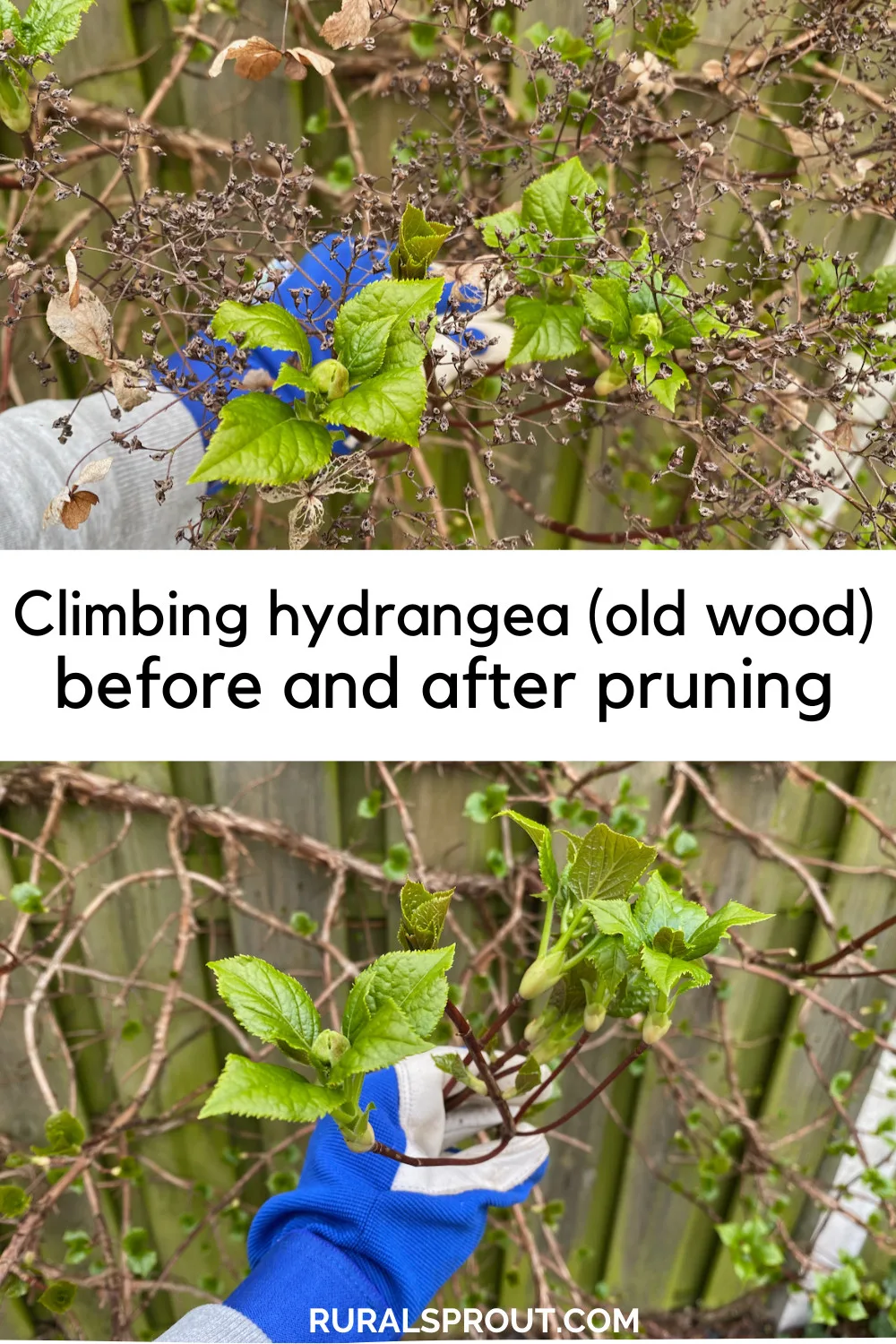
Not all hydrangeas flower on old wood, but the following do:
Climbing hydrangea (H. petiolaris)
French hydrangeas (Hydrangea macrophylla)
Oak-leaf hydrangea (H. quercifolia)
Mountain hydrangea (H. serata)
Rough-leaf hydrangea (H. aspera)
With this caveat in place, we still need to do a bit of cleanup and pruning in spring for these hydrangeas.
Start by deadheading old growth.
First, we’ll deadhead last year’s flowers. We left them on the plant last fall to serve as natural insulation and add a bit of protection over the winter months, but now it’s time to make room for new growth.
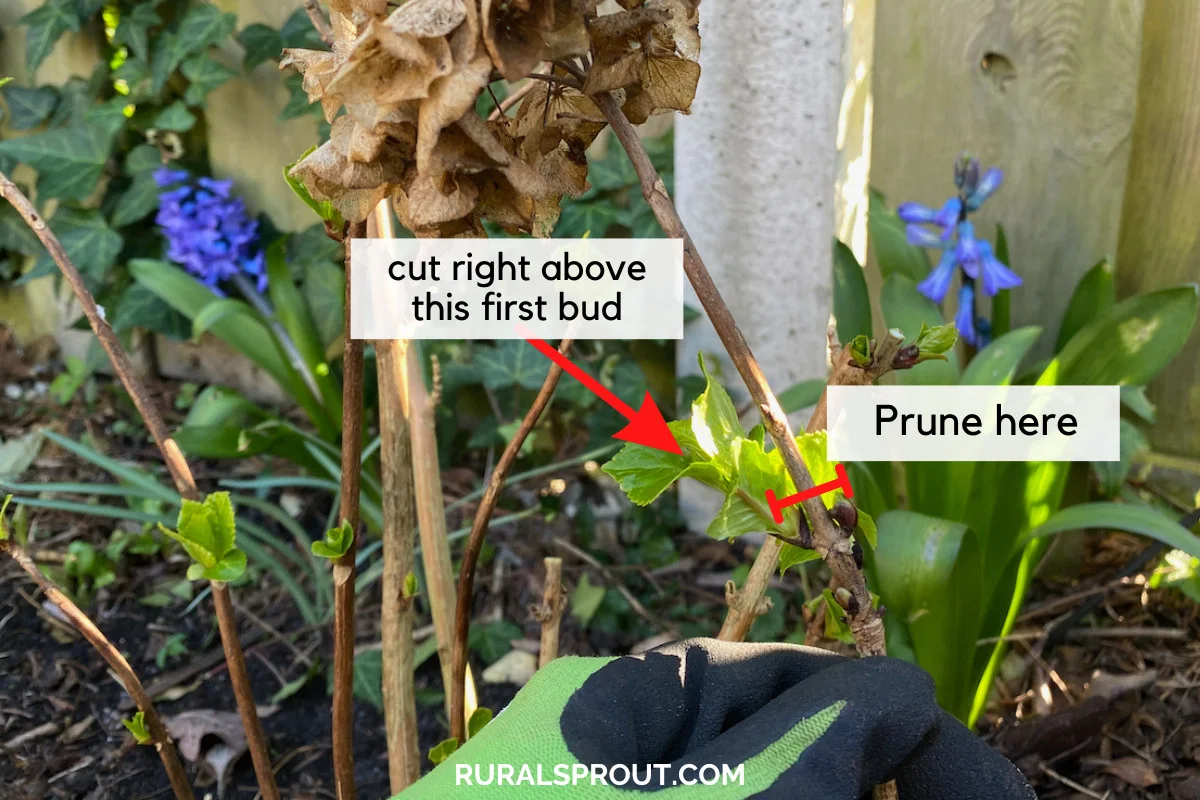
We’ll cut right above the first new bud we can see – the first one counting from the top. This is where new growth will shoot from. At this point, if you want to give your hydrangea a different shape, you could cut right above the second bud on the exterior branches to make the entire shrub rounder. I think that’s only really necessary with older shrubs that are starting to lose their uniform shape.
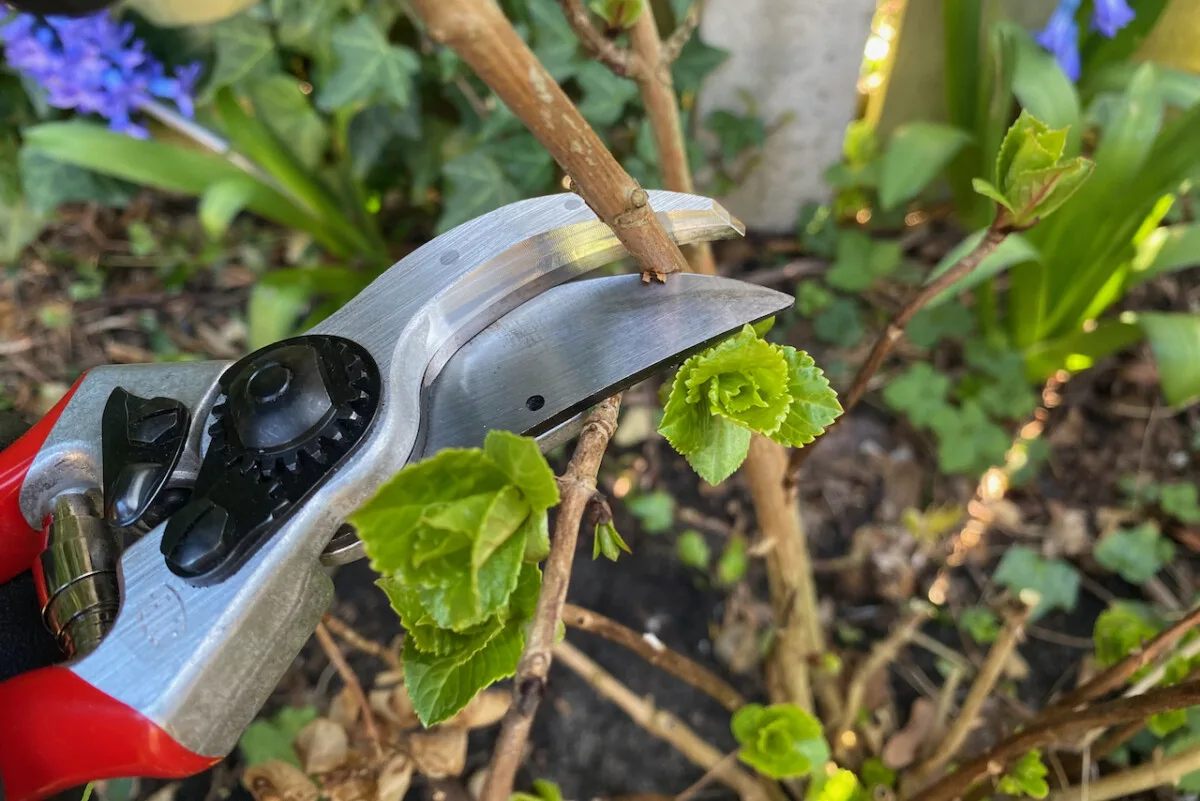
Then thin out some older branches, if needed.
Hydrangeas that bloom on old wood do not really need hard pruning in order to flower well, so don’t get overly zealous with the secateurs. But you may find that some older branches have become unproductive. As much as I dislike using that word for plants, it’s true. The older branches have put in the work and are now either dead or dying.
Related Reading: 30 Plants You Shouldn’t Prune in Spring
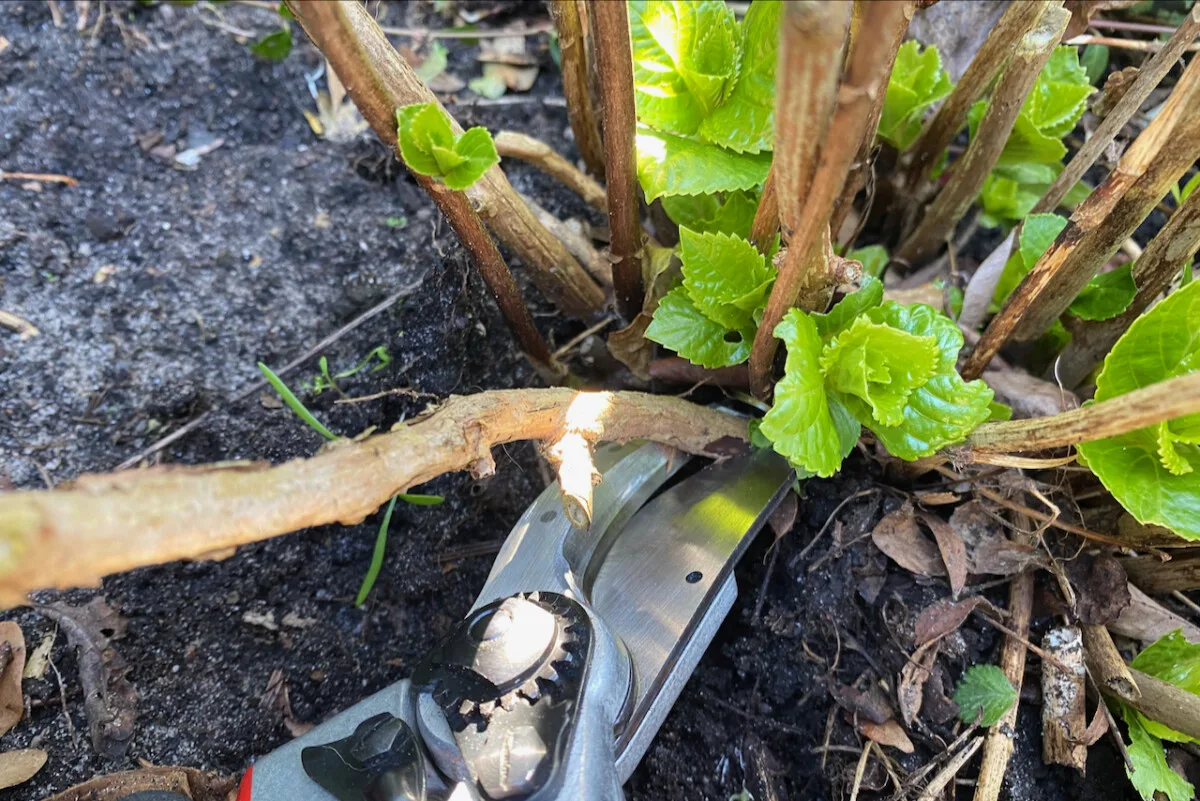
You can cut these older branches at soil level. You’ll be able to tell which ones they are because they don’t have any buds growing off them, they’re lighter in color and they feel hollow. Occasionally, you may misjudge a stem. That’s ok, as long as you don’t take out too much healthy growth. You can save any productive stems to grow as cuttings.
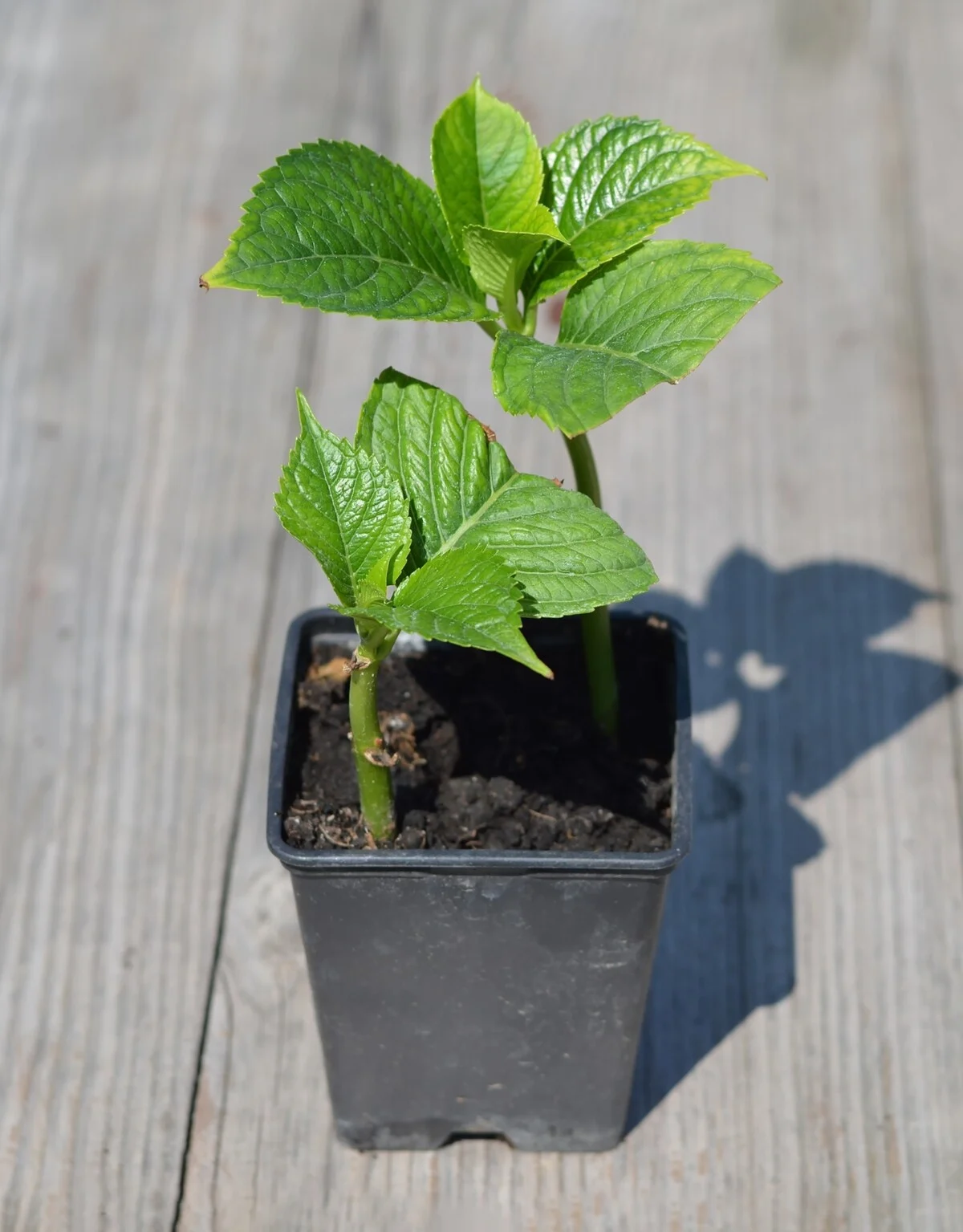
Have a look at the difference between some still productive branches and some that are dead.
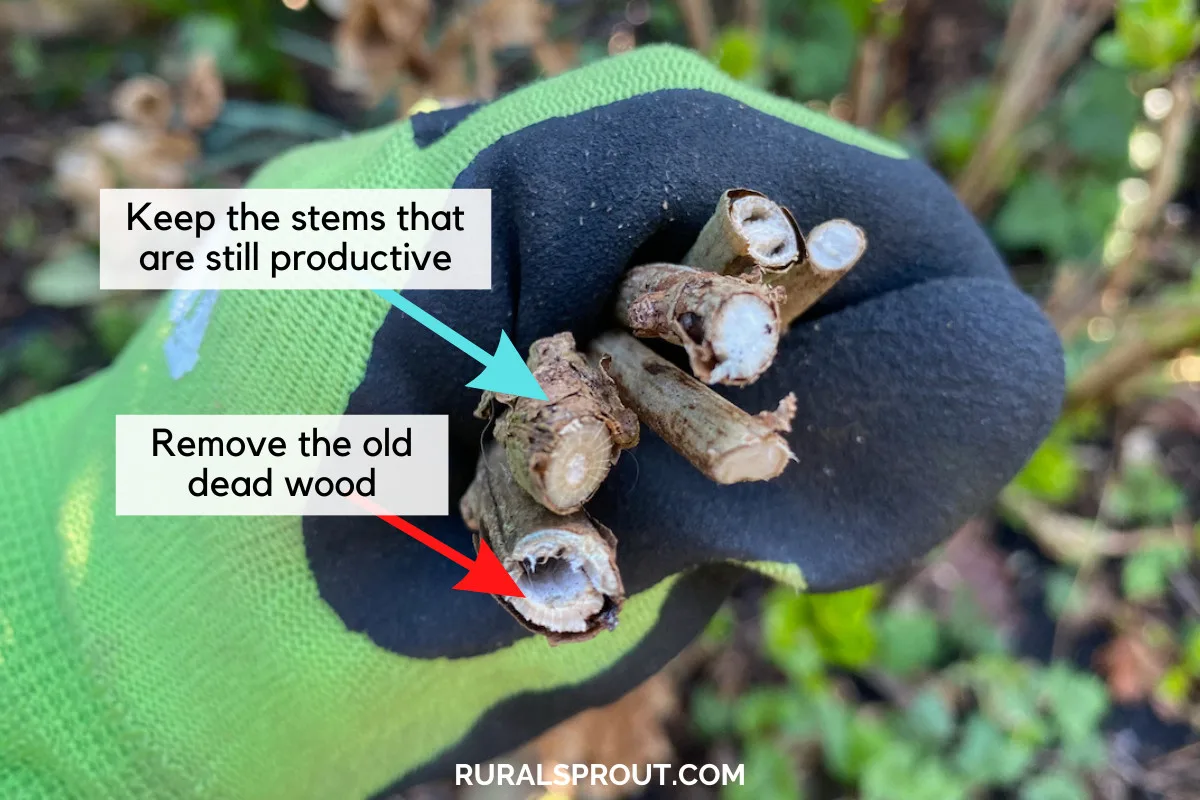
2. You can hard prune new wood hydrangeas.
There are some types of hydrangeas that bloom on new wood. That means they will flower on stems that have grown this year.
The most popular ones in this category are:
Smooth-leaf hydrangea (H. arborescens) and
Panicle hydrangea (H. paniculata)
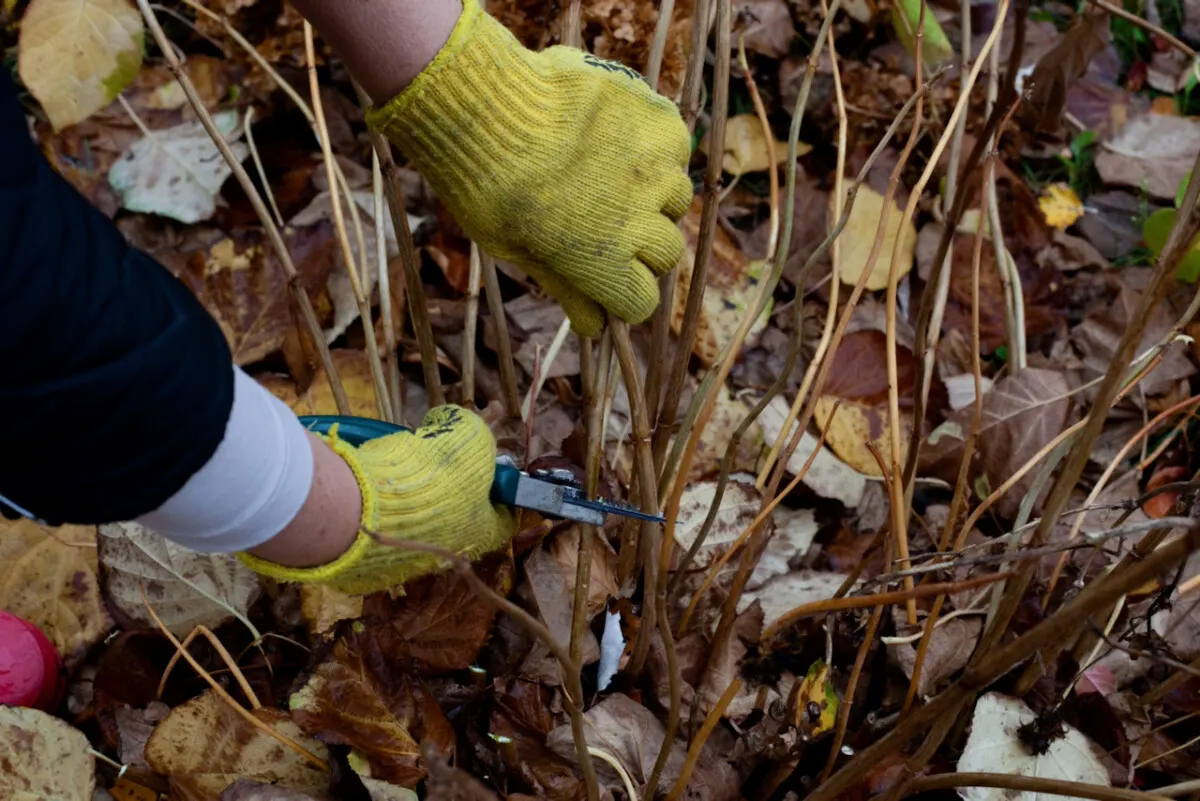
Smooth-leaf hydrangea can grow up to five feet in one summer (that’s around 1.5 meters). So we need to give it a harder prune in spring to keep it at a manageable size for most gardens. You can cut it close to the ground and it will just shoot new stems over the next couple of months. If just the thought of cutting it down so low makes you a bit nervous, you can start by trimming about a third off the top.
Hydrangea paniculata is not such a fast grower, so pruning it back to a short framework should be enough.
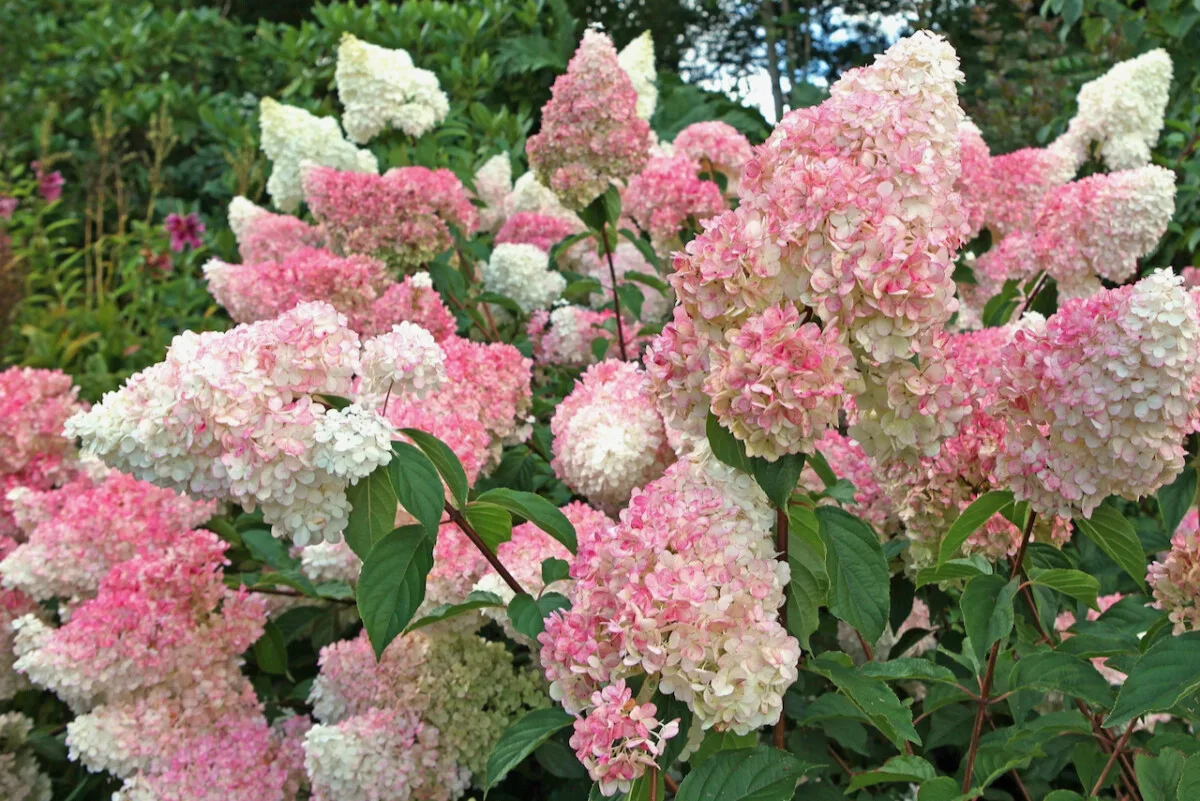
For both of these hydrangeas, the same rule applies as above: cut right above a leaf node.
3. Decide whether your hydrangea is in the right place.
This may be a controversial piece of advice because, customarily, hydrangeas are best transplanted in the fall. BUT (big one!) if you notice that your hydrangea is not thriving in its current location, there’s no time like the present to try a different spot.
I find it preferable to move the hydrangea in early spring, right before it starts growing again, than to leave it in the same less-than-ideal location for another six months.
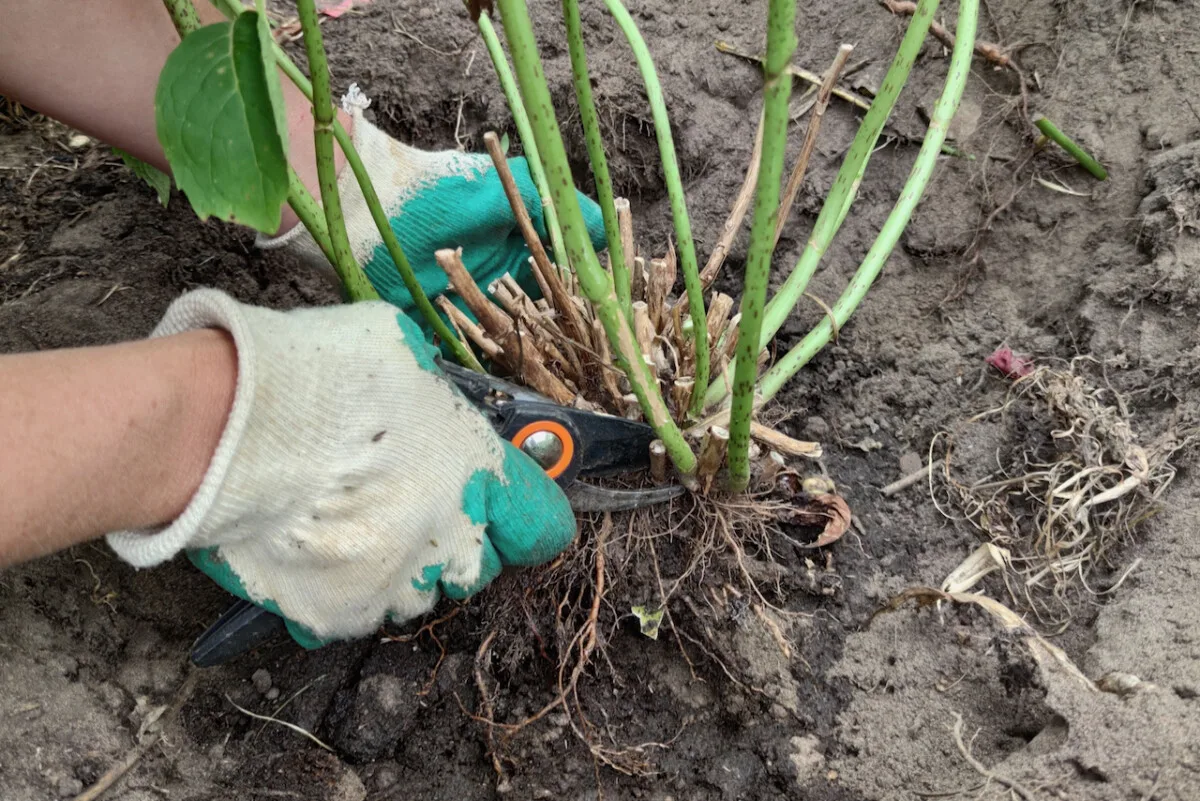
Keep in mind that hydrangeas don’t like too much disturbance – so your plant might not bloom as much this year, but it will have the perfect conditions to settle in. I think of it as a short-term inconvenience for thriving long term.
4. Add a layer of fresh compost.
You will not see me out in the garden with endless bottles and cans of fertilizers that promise flowers the size of my head. But applying a healthy layer of fresh compost a few times a year is a non-negotiable job for all of my perennials.
The first layer goes on in spring, covering the portion below the drip line of my hydrangeas. This compost will slowly release nutrients just when the shrubs need them the most. As you do it, try not to pile up the compost too high on the stems.
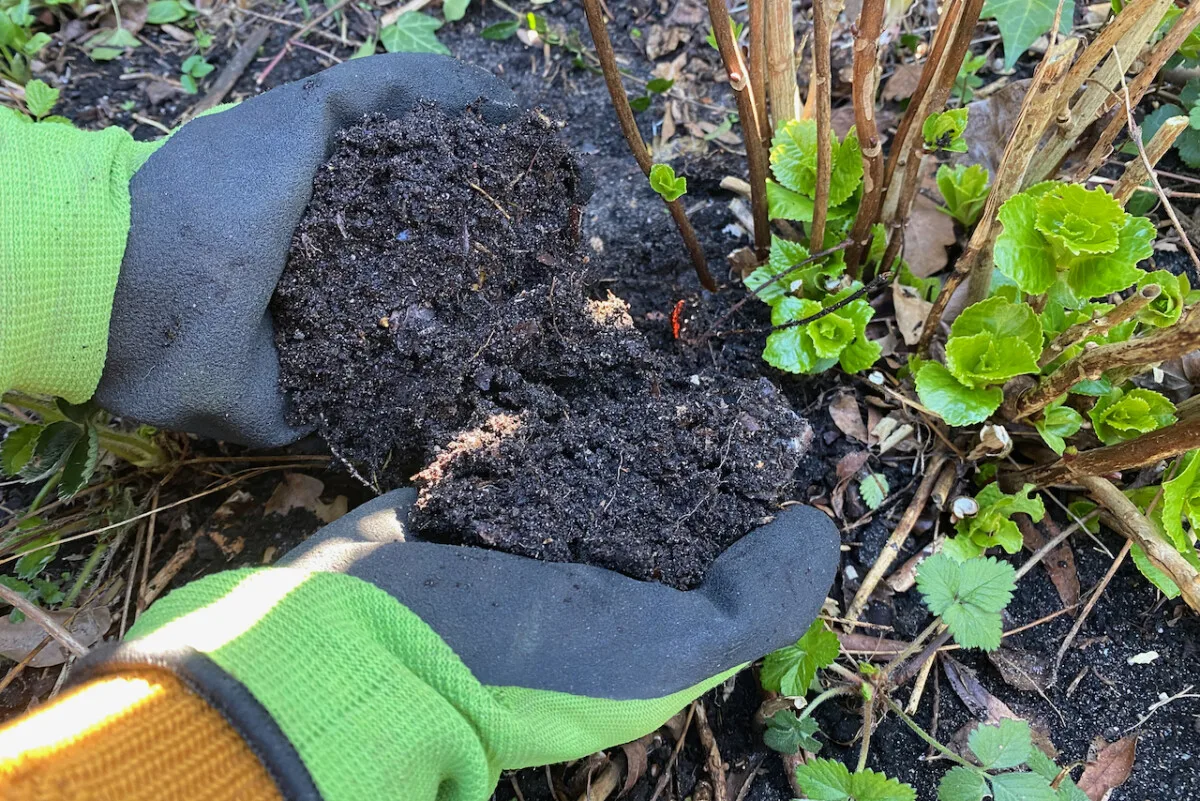
This compost will slowly release nutrients just when the shrubs need them the most.
I will do it again at the height of summer, just as the shrubs are slowing down this year’s bloom production and starting to form next year’s buds.
5. Add some mulch for acid-loving shrubs.
Hydrangeas – newly planted ones and young shrubs – look amazing on a background of mulch. But it’s not just an aesthetic consideration. Mulch helps with weed suppression and water retention over the summer months.
Hydrangeas are acid-loving plants, so using mulch made out of pine needles or pine bark will keep them happy.
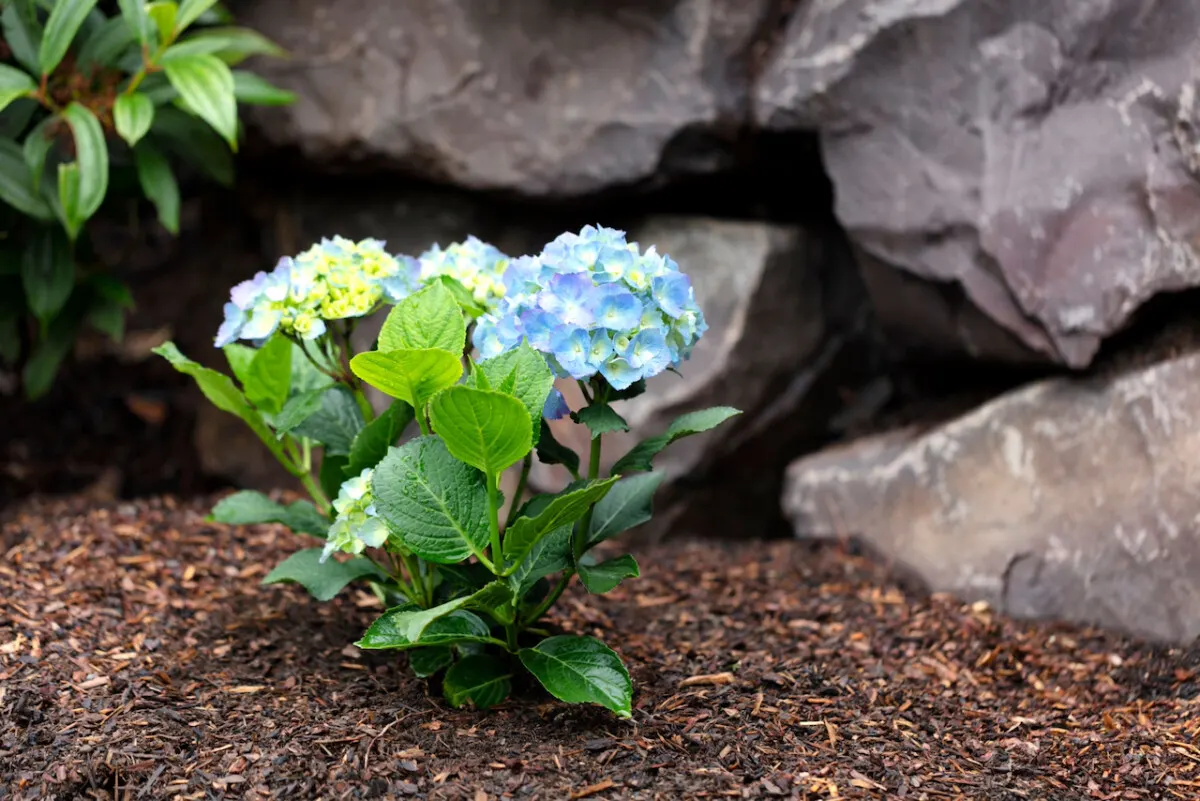
But keep in mind that the acidity of the soil will interfere with the color of French hydrangea blooms. The more acidic the soil (pH 5.5 or lower), the closer to purple and blue your hydrangeas will grow. Neutral and alkaline soil (with a pH of 6.5 and higher) will keep the blooms pink.
That’s pretty much it! Hydrangeas might seem needy, but the spring care they need is neither complicated nor time-consuming.
Read Next:

Get the famous Rural Sprout newsletter delivered to your inbox.
Including Sunday musings from our editor, Tracey, as well as “What’s Up Wednesday” our roundup of what’s in season and new article updates and alerts.


